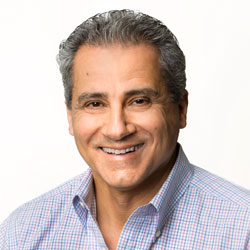Operating the network has always been complicated. The network is like a nervous system, with different flows of information that make decisions about if or where to make a connection. The Software-defined Networking Controller (SDN-C) is like the brain of ECOMP. Similar to a human brain, the SDN-C has a "right brain" (the mathematical side) and a "left-brain" (the artistic or flexible side). Although the SDN-C doesn't paint pictures or write poems, they are programmed to implement new services. Let's take a deeper look into both halves.
The right brain in the SDN-C is event driven. It gets a stimulus and reacts. Similar to a human reacting to experience, we give instructions to our controller via directed graphs. Directed graphs are a service-specific execution script - step-by-step instructions based on an event. The script can call actions - similar to the brain saying move my arm or step around that puddle in the sidewalk. The directed graph can do a lot of different things for the network, like configure routers, send BGP messages, send OVSDB or Openflow messages and assign resources like IP addresses and VLAN tags. These activities follow a pre-defined path and don't perform new actions unless the directed graph is changed. But, the graph can be altered to handle an existing event differently or a completely new event. The SDN-C can be "taught" new things without any coding.
The left brain in the SDN-C is more flexible. In the network, the left brain watches telemetry about load on the network and link status. Then based on advanced math, it decides whether something new has occurred or let the network function normally. The left brain of the controller listens and can take actions like refilling a resource or asking for an additional virtual machine to be spun up. Sometimes the left brain may even tell the right brain needs to perform an action because a certain event occurred. Similar to waking up in the middle of the night and realizing you forgot to lock the front door, the left brain tells the right brain to wake up and lock the "door."
The two halves of the SDN C do a lot of things with YANG (a data modeling language used to model network elements configuration and state data) models and adapters to different network devices and protocols. These are the eyes, ears, arms and legs the brain reacts to and controls.
The SDN-C is an operating system for the network. By taking the control plane off the network hardware and running it as software, the controller facilitates automated network management and makes it easier to integrate and administer business applications.
For more on ECOMP, take a look at our white paper and share your feedback with us.

Chaker Al-Hakim, Assistant Vice President, AT&T ECOMP
